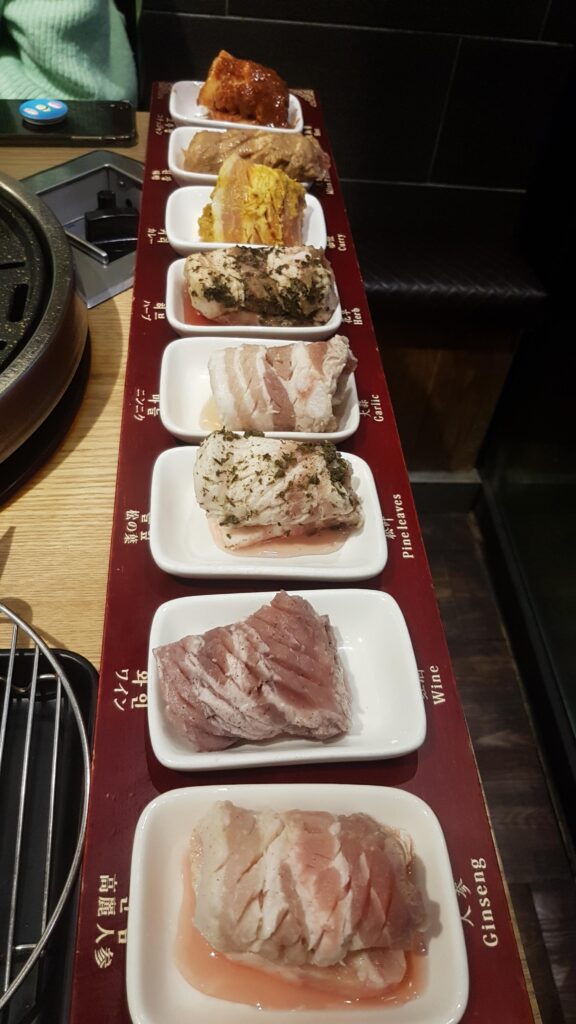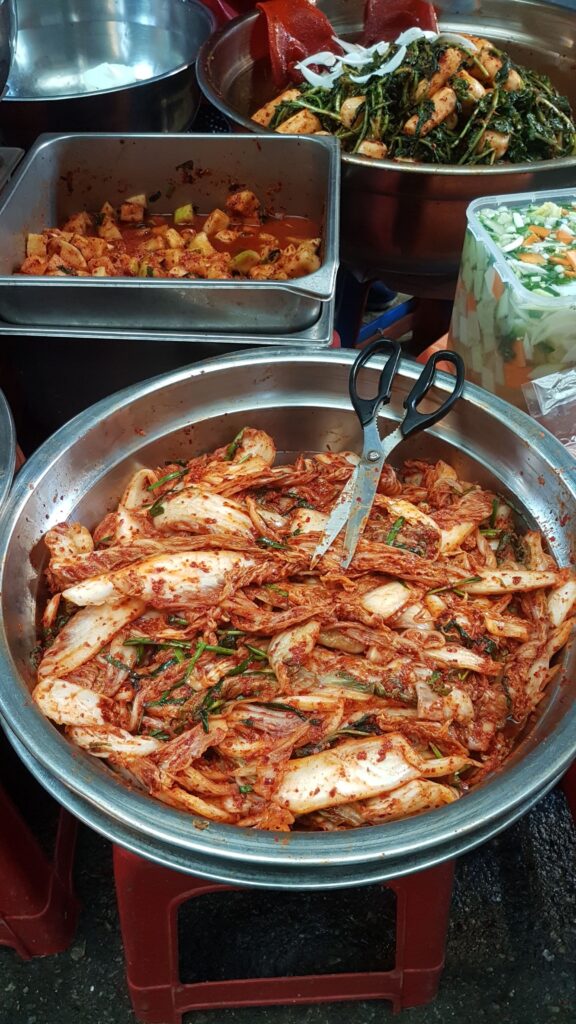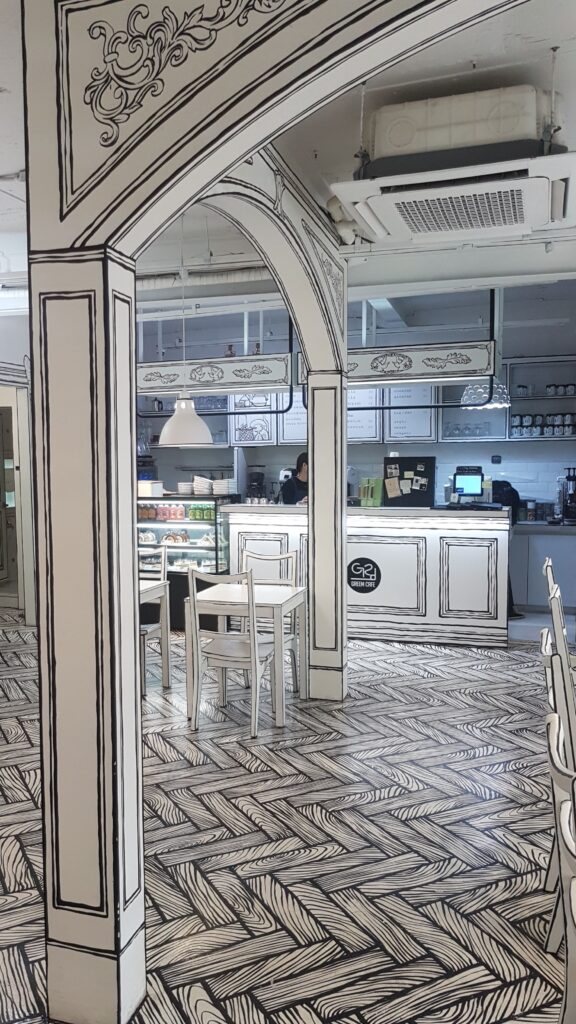One of the best days of my life occurred on a mountaintop in South Korea. It was over 20 years ago during a stint in which I taught English in the nation’s capital, Seoul. One Saturday we had a teaching workshop in the city. Afterwards one of the teachers asked if anyone wanted to go for a hike. Sure, I did. So did six others and so we set off on an unplanned adventure. Over the course of the next few hours we got lost, joked around with locals and got to know each other better as we tackled the challenging trail up Bukhansan mountain on Seoul’s North-west fringe. I remember emerging from the scrub to a summit bathed in late afternoon sunshine as I gazed out over the city feeling happy and invigorated, marvelling at the unexpected way the day had turned out. Later we made our way back down the trail, ate some Korean BBQ and got drunk together. The day remains memorable to me for its improbability, spontaneity and sense that anything could happen.
Well, times change and memories fade or they crumble into elusive fragments coloured by nostalgia that bear little resemblance to actual events. Perhaps you become your own unreliable narrator. My stint in Seoul has always carried the fantastical elements of a fever dream. Upon returning home after two-and-a-half intensely formative years I felt lost. With no one to share the memories with, it was almost like my time in the Land of the Morning Calm never happened.
Over the years I’ve asked myself if that day on the mountaintop was really as good as I remember it. Was my whole Seoul experience a neon-blasted acid trip, shot through with the pungent aromas of chilli, barbecued meat and the throat-tightening residue of soju? What would happen if I went back? Would the city live up to its billing in my mind? Or would my memories be eroded and exposed by the passage of time and the force of the here and now?
This and thoughts like them are fizzing through my mind as I desperately try to recall the trail up Bukhansan mountain almost 20 years later. I’m accompanied by a fellow journalist, Peter, who as spontaneously as I had two decades earlier, accepted my invitation to “go for a hike”. Peter and I have already began hatching a plan for him to return to Seoul as an English teacher. We’ve also got lost several times, as my recollection of the route, relying as it does on long-dormant brain circuitry, escapes me. It’s 10am on a cold and misty weekday morning as we navigate increasingly steep and rocky terrain towards the summit. Our journey will take only 45 minutes or so but as we struggle upward through the fog, I feel like I’m climbing back through the very mists of time.

LOST SEOUL
Upon touching down a couple of day’s earlier at Incheon Airport, roughly an hour outside of Seoul, I’m hit by a heavy pang of nostalgia. As our bus makes its way through the city to our digs at the Novotel Ambassador at Dongdaemun, we face an onslaught of concrete, iron and garish neon signage in the Hangul alphabet. Greater Seoul is home to 25 million people. Bisected by the Han River, the north of the city is older and more traditional, distinguished by ancient gates and the palaces of Gyeongbokgung and Changdeokgung. South of the river is the new, more modern Gangnam neighbourhood, a glitzy area famous for the country’s most famous export, K-Pop, as well as high-end shopping boutiques. It’s all served by one of the best subway systems in the world, a sprawling spider web of a network, that’s fast, clean and efficient and features public wi-fi at least three times as fast as anything in Oz.
To be honest, Seoul by day is a rather drab onslaught of relentless concrete high rises. But by night, the neon lights twinkle, throwing a glittering cloak over the city that lingers in your mind’s eye. In my memories of the city, it’s always night-time.
After a good night’s sleep, I decide to join a walking tour to reacquaint myself with the city’s attractions. It’s below zero as we set off from Gwanghwamun station, situated on a mighty 12-lane boulevard. A statue of King Sejong bestrides the boulevard like a colossus. Beyond that lies Gyeongbokgung Palace, originally built in 1395. Suitably grand, heck perhaps even grandiose, it’s distinguished by its luminous wooden awnings. The changing of the guard is a riot of colour, cloth and pageantry, even if the booming drums and fake beards lend it a slightly pantomime air. Behind the palace lies the heavily guarded Blue House, home to the President, while close by is the Korean Folk Museum, which showcases traditional clay dwellings and clothes from the Chosun era. Our tour concludes in the charming Bukchon Hanok Village, where alleyways and awnings provide a quaint backdrop for locals in traditional dress to take snaps. It’s only a short stroll from here to Seoul’s most touristy neighbourhood, Insadong, a warren of winding alleys, teahouses, cafes and souvenir shops. You can easily lose an afternoon here.
After the tour winds up a group of us make our way across town to Gwangjang Market, stopping to take a snap in front of the school where I taught English – essentially explained idioms – to businessmen and university students back in 2000. Gwangjang offers a barrage of street food, from ubiquitous kimchi in large silver pots to topoki stands serving fat, gelatinous noodles in a sweet, tangy red sauce. There are also chickens’ feet, pigs’ trotters and a market stall run a by woman made famous by the Netflix series, Street Food: Asia.
After a short rest back at our hotel we head out for some Korean Fried Chicken, a modern delicacy Korea has made its own, before stumbling across a batting cage on the ninth floor of a department store, where we proceed to swing and miss at a virtual pitcher. As always in this chaotic city, the possibility of random adventure is always lurking around the next corner or up a flight of nondescript stairs.

ADD SPICE
Peter’s brow is glistening in sweat as tears well in his eyes. He’s a victim of a fiery broth called Kimchi-jjigae and, rather unwittingly, he’s confirming a stereotype Koreans have long held of foreigners – that our delicate palates can’t handle spice.
We’ve stopped for lunch in the heart of the Myeong-dong fashion district – an area filled with cosmetics shops and boutiques specialising in quirky fashion, a little bit like Tokyo’s Harajuku neighbourhood. Korea has the highest rate of cosmetic surgery in the world, with a reported one in three women going under the knife. I opt for the softer option of a caviar-infused facemask.
Later that evening our party (read: other journos) take a food tour. Once again it starts at Gwanghwamun station before following a man-made canal through the neon jungle of the Jongno district. The canal was not around 20 years ago and I’d have to say it’s a welcome addition to the cityscape.
The tour takes in the hyper-coloured ‘youth street’ of Jongno, then we grab some chicken sticks at a market stall in Insadong, before winding up at the beautiful Jogyesa temple, home to three gigantic gold buddhas. Morsels of street food have whet the appetite for something more substantial, so we retire to a BBQ joint specialising in samgyeopsal. This is pork belly, traditionally seasoned with salt, although tonight we’re given a spread that includes flavourings like curry and ginseng. It’s all washed down with shots of soju we are encouraged to drop into our local Cass beers and skoll. Some things don’t change.
Needless to say, I wake the next morning a little hazy. It’s appropriate for the city is again covered in fog and once again my memory is similarly cloudy. I decide to hunt down a café that has become a hit on Instagram called Café Yeonnam-dong 239-20, in which the interior is designed to look like an illustration. I arrive on the stroke of 11 and have the place to myself to take some selfies, becoming an illustrated character in my own animated wonderland. It seems fitting; the contours of my memory have proven similarly fluid and abstract these last few days.

NEW HORIZONS
Back on the mountain, Peter and I step carefully onto Bukhansan’s bare, rocky summit. I look around, barely able to make out the rooftops of high-rise apartment buildings below. Sadly, the rest of the city remains hidden beneath the blanket of fog, a far cry from the sun-kissed hue of my memories. But, as was the case 20 years ago, that sense of whimsical adventure remains, this time provided by Peter, who removes his shirt (unprompted!) and begins striking poses on the rocky summit, his muscular torso an imposing, if slightly confronting image that will soon light up insta and possibly do wonders for him on dating apps.
It’s at this point that a thought occurs to me. Attempting to recapture the past or wind your way down the curling alleyways of your faltering memory is something of a fool’s errand. Better to live in the moment and be open to possibility and adventure. Just as Peter did today and I’d done twenty years before. Now, thanks to Peter, I have a brand new, wholly-original, if retina-scorching memory of Bukhansan and indeed, a whole new bank of memories of this amazing city to cherish. Or to forget, as the case may be.
FLY
Jetstar flies to Seoul three times a week. Jetstar.com
EAT
Restaurants serving staples like galbi, dolsot bibimbap and samgyeopsal are ubiquitous. Try Gwangjang Market for a sensory experience.
SHOP
Dongdaemun Market is a shoppers’ paradise with floor upon floor of clothing bargains.
HIKE
Two of the best hikes in the city are Bukhansan and Suruksan. Also try Namsan Tower for views over central Seoul from a revolving restaurant.
















